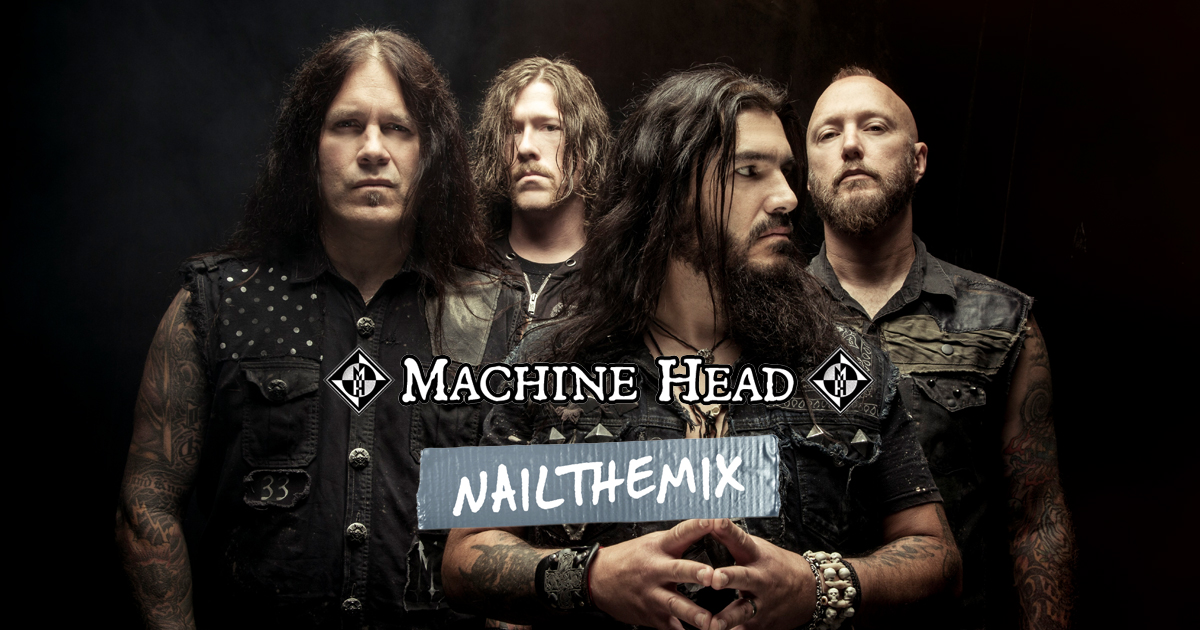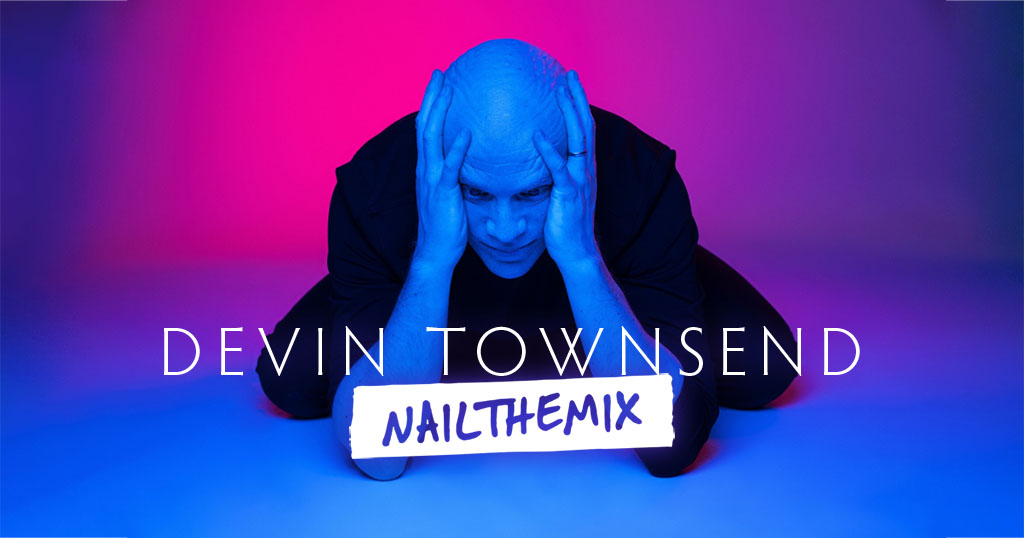
Mixing Machine Head’s Crushing Quad-Tracked Guitars
Nail The Mix Staff
Machine Head’s guitar sound is legendary. It’s a relentless wall of force, but it’s also remarkably tight and clear. So when you get your hands on the multitracks and solo those quad-tracked rhythm guitars, you expect pure gold, right? Well, not always. As producer Joel Wanasek discovered during his Nail The Mix session, raw DI tracks, even from a band like Machine Head, need a ton of work to sit right in a mix.
The initial problem was clear: the guitars were a chaotic mess of low-end mud and lacked the punch needed to drive the track. They were fighting the bass and kick, making the whole foundation feel loose. Here’s a breakdown of Joel’s process to wrangle these beastly guitars into a tight, aggressive, and mix-ready force.
Tame the Chaos Before You EQ: The Limiter Trick
Before even reaching for a parametric EQ, Joel noticed a ton of uncontrolled “movement” in the low end of the guitars. This is that woofy, inconsistent rumble you often get from cabinet resonances or a slightly loose performance. Just scooping this out with an EQ can suck the life and punch out of the tone.
The Problem: Low-End Cabinet Resonance
If you solo the guitars and listen closely to the low-mids and bass frequencies, you can hear this inconsistent energy. It’s a flabby sound that pulses unevenly with the rhythm, making the chugs feel weak and undefined. You can’t build a tight mix on a wobbly foundation.
The Solution: Pre-EQ Limiting
To solve this, Joel inserted a limiter—in this case, the classic Waves L1—directly on the guitar tracks. By applying a bit of limiting, he instantly tamed those wild dynamic swings in the low end. This isn’t about making the track louder; it’s about creating a more consistent and predictable signal for the EQ to process. This simple move tightens everything up without sacrificing the essential weight of the guitars.
Aggressive EQ for a Legendary Metal Tone
With the dynamics under control, it was time to carve out a space for the guitars. The goal was to remove the mud, add aggressive presence, and lock them into the groove of the kick and bass. This required some bold and surprisingly surgical EQ moves.
Start with the Right Source Mic
The session included tracks from both Shure SM57s and Sennheiser MD 421s. While 421s are classics, Joel found they weren’t working for this particular tone and immediately switched to just the SM57 tracks, which provided a better starting point. It’s a great reminder that there’s no “best” mic—only the right mic for the sound you’re chasing.
Cut the Mud, Not the Weight
The guitars had, as Joel put it, “endless bottom end.” The first order of business was to clean that up. Using a high-pass filter, he didn’t just pick a frequency and call it a day. Instead, he swept the filter up while listening to the entire rhythm section.
The key is to listen to how the guitar interacts with the attack of the kick drum and the body of the bass. You want to cut just enough mud to create space, but not so much that the guitars sound thin. This is a tactile process where you’re finding the exact spot where everything just “locks” together.
The Surprising 4kHz Boost for Presence
Here’s where things get interesting. These guitars sounded dull and needed more note definition without adding more low-mid clutter. The solution? A massive boost at 4kHz. Yes, a big boost in the upper midrange.
This might seem counterintuitive, but it worked perfectly. That 4kHz range helped the guitars cut through the mix and align with the “click” of the kick drum and the “swank” (the string noise and attack) of the bass. It brought the guitars forward and gave them an aggressive edge that sat perfectly in the track.
Fine-Tuning with Surgical Boosts and Cuts
Beyond the big 4k move, the tone was refined with a few other key adjustments:
- A boost around 1.8kHz added more note and harmonic clarity.
- A high-shelf boost at 14kHz gave the dull-sounding guitars some much-needed air and sizzle. This was higher than usual, but it’s what the track called for.
- A tiny, surgical cut high up in the frequency spectrum cleaned up a nasty masking frequency. It’s amazing how a small, precise 1-2 dB cut can make the entire guitar tone feel clearer and less harsh.
The “Feel” Method: Trusting Your Ears
Throughout the process, Joel wasn’t just looking at an analyzer. He was sweeping frequencies and making tiny, 0.1 dB adjustments, listening for the exact point where the tone went from “good” to “great.” He described it as finding the spot that just feels right. It’s that moment where you lean in and think, “yeah, that’s it.” This intuitive approach is what separates a good mix from a truly powerful one.
Bringing It All Together (And Going Deeper)
Transforming Machine Head’s raw, muddy quad-tracked guitars into a tight, aggressive force came down to a clear, methodical process:
- Control Dynamics First: Use a limiter to tame inconsistent low-end before you EQ.
- Carve with Context: Use high-pass filters while listening to the whole rhythm section to find the perfect pocket.
- Be Bold with Boosts: Don’t be afraid to add aggressive presence (like the 4kHz boost) to lock instruments together.
- Trust Your Gut: Make micro-adjustments until it feels right.
These are the kinds of powerful, practical techniques you can apply to your own mixes right now. But imagine watching a pro like Joel Wanasek apply these concepts to the entire song, from drums and bass to vocals and final mastering.
Machine Head on Nail The Mix
Joel Wanasek mixes "Is There Anybody Out There"
Get the Session
With Nail The Mix, you can. You can watch the full session where Joel mixes this Machine Head track from scratch and get the actual multitracks to practice on yourself. To see how it all comes together, check out the Machine Head Nail The Mix session.
Ready to stop guessing and start learning the techniques that the pros use on real records? Nail The Mix gives you the tools, A-list mentors, and community to elevate your skills.
Unlock the full session and download the multitracks here: Nail The Mix – Machine Head.
And if you’re ready to take a comprehensive journey into crafting professional metal mixes, check out our intensive course.
Get a new set of multi-tracks every month from a world-class artist, a livestream with the producer who mixed it, 100+ tutorials, our exclusive plugins and more
Get Started for $1






